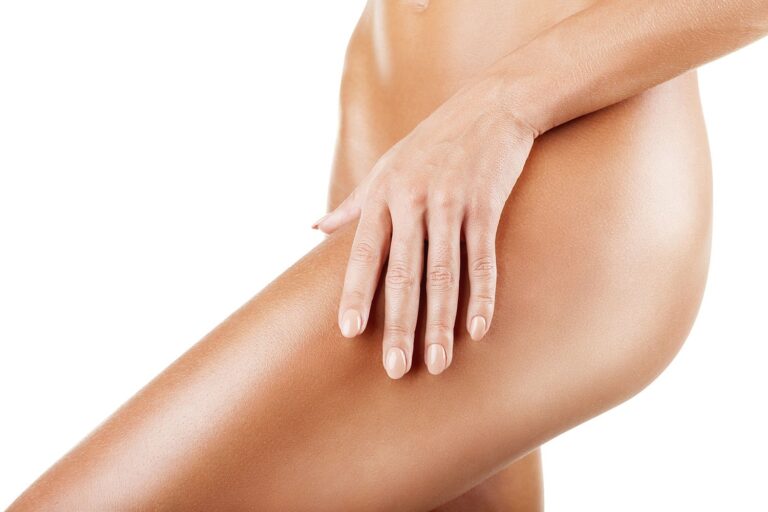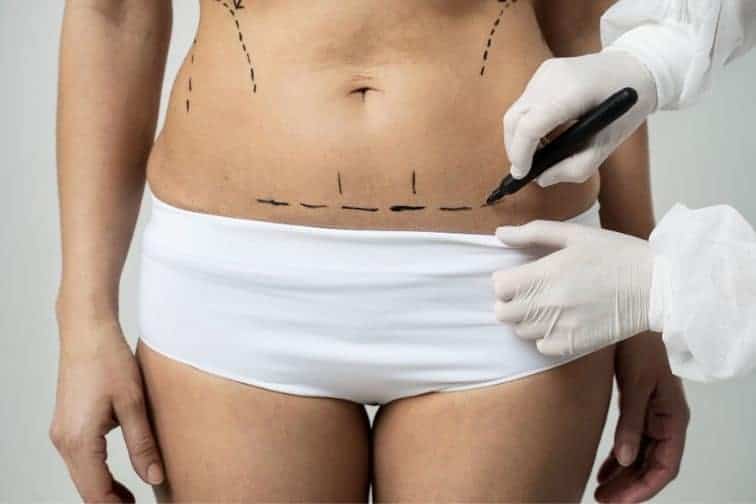From Procedure to Progress: Your Guide to Liposuction Recovery
Understanding the Liposuction Healing Journey
Initial Days
The first few days after liposuction are critical. Patients often experience swelling, bruising, and discomfort. It’s essential to follow your surgeon’s advice closely during this period.
Rest is paramount. Most people need to take a few days off work. Compression garments should be worn as advised. They help reduce swelling and shape the body.
Weeks Following
In the weeks that follow, significant improvements become noticeable. Swelling and bruising start to subside. However, some may linger for up to a month.
Patients can usually return to light activities after a week. But, strenuous exercise should be avoided for about a month, as per the provider’s advice and the nurse advice line, to ensure adequate recovery time. This precaution aids in preventing complications and ensures optimal healing.
Long-term Healing
Complete healing from liposuction takes time. The final results may not be visible for six months to a year.
During this phase, it’s crucial to maintain a healthy lifestyle. Weight fluctuations can affect the outcomes. Regular check-ups with your surgeon are recommended to monitor progress.
Individual Variability
Healing times vary widely among individuals. Factors like age, health status, and the extent of surgery play significant roles.
Adhering to post-operative care instructions cannot be overstressed. They are designed to minimize risks and hasten recovery.
Initial Days After Surgery: What to Expect
Post-Surgery Symptoms
After undergoing liposuction, patients can anticipate experiencing swelling, bruising, and discomfort. These symptoms are a natural part of the healing process. The use of a cannula during surgery often leads to these reactions as the body adjusts and begins to heal.
Patients may notice significant swelling in the treated areas. This swelling is your body’s response to the procedure and can last several weeks. Bruising is also common and varies from mild to severe, depending on the extent of the procedure and individual healing rates. Discomfort or pain is typically present but manageable with prescribed medications.
Compression Garments
Wearing compression garments is crucial for a smooth recovery. These garments help reduce swelling by applying even pressure to the treated areas. They also support the tissues as they heal, ensuring better results from your surgery. Most surgeons recommend wearing them for a few weeks post-surgery.
Compression wear not only aids in reducing swelling but also minimizes movement that could disrupt healing. It’s essential for shaping the body as it adjusts to its new contours after liposuction.
Mobility and Assistance
In the first few days following liposuction, patients will experience limited mobility. It’s important to have assistance readily available during this time. Simple tasks may become challenging, and having someone there to help can make a big difference in comfort levels.
Rest is key in these initial days. While light walks are encouraged to promote circulation, strenuous activities should be avoided completely. Assistance with daily tasks ensures that patients can focus on resting and healing without straining their bodies unnecessarily.
Progress in Weeks 1-2: Healing Milestones
Swelling Reduction
In the first two weeks, patients notice a significant decrease in swelling and discomfort. This reduction allows for greater movement without pain. It’s crucial to keep the body hydrated and maintain a balanced diet to aid this process.
Patients often observe more defined contours as swelling subsides. However, complete results may take longer to appear.
Follow-up Visits
Scheduled appointments are key during this period. They ensure stitches are removed safely and healing progresses well. Doctors check for any signs of infection or complications at these visits.
It’s an opportunity to ask questions about the recovery process. Patients should utilize these sessions to clarify any concerns they have.
Compression Garments
Wearing compression garments remains essential. They help shape the body and reduce swelling further.
Doctors provide instructions on how long to wear these garments. Adherence to these guidelines is critical for optimal recovery.
Navigating Weeks 3-5: Continuing Recovery
Activity Resumption
As you move into weeks 3 to 5, gradual resumption of normal activities becomes possible. You may find yourself able to return to work, provided your job does not involve heavy lifting or strenuous physical exertion. It’s crucial, however, to listen to your body and not rush this process.
Patients should continue adhering to any specific restrictions advised by their surgeon. This period allows for increased movement but requires a cautious approach to avoid complications.
Contour Refinement
By now, the swelling that initially obscured your liposuction results will have significantly decreased. This reduction in swelling reveals more of the improved body contour you were aiming for.
It’s an encouraging phase as you start seeing tangible outcomes of your procedure. Yet, patience is key since full results can take several months to manifest completely.
Exercise Caution
Despite feeling better and witnessing visible improvements, engaging in high-impact activities or heavy lifting is still off-limits during these weeks. Such actions can provoke swelling and negatively impact the healing process.
It’s advisable to stick with light exercises like walking, which promotes circulation without straining the recovery areas.
Beyond Week 6: Long-Term Healing Insights
Full Results
Many people anticipate quick outcomes following liposuction. However, full results may take several months to manifest. This delay is due to the body’s natural healing process. Swelling gradually decreases, and the treated area starts to reveal its new shape.
It’s crucial for patients to understand this timeline. They should not feel discouraged if immediate changes are not visible. Patience plays a key role in the recovery journey.
Healthy Lifestyle
Maintaining a healthy lifestyle is vital for sustaining liposuction results. This includes regular exercise and a balanced diet. Such habits not only support long-term healing but also enhance overall well-being.
Patients who adopt these practices tend to experience more satisfactory outcomes. They see their efforts reflected in their body’s appearance over time.
Final Visit
Scheduling a final post-operative visit is advisable. This appointment allows patients to assess their recovery outcome with their surgeon. It’s an opportunity to address any concerns or questions about the healing process.
This visit often marks a significant point in the patient’s journey. It provides closure and reassurance about the surgery’s success.
Essential Recovery Tips for Optimal Results
Stay Hydrated
Staying hydrated is crucial during the recovery phase. It supports healing and helps your body recover more efficiently. Drink plenty of water every day. This simple step can significantly impact how you feel and look during recovery.
Drinking enough fluids aids in flushing out toxins. It also keeps your skin looking healthy and vibrant, which is essential after liposuction.
Balanced Diet
A balanced diet plays a vital role in your recovery process. Incorporate fruits, vegetables, lean proteins, and whole grains into your meals. These foods provide the nutrients your body needs to heal properly.
Avoiding processed foods and sugars will also help reduce inflammation. This way, you support your body’s natural healing mechanisms.
Gentle Walks
Gentle walks are highly recommended to improve circulation. They can also reduce the risk of blood clots forming post-surgery. Start with short walks around your home or neighborhood.
These walks not only aid in physical recovery but can also uplift your mood. Remember, start slow and gradually increase the distance as you feel more comfortable.

Follow Aftercare Instructions
Following your surgeon’s aftercare instructions is perhaps the most important tip. Each provider has specific guidelines based on their approach to liposuction. Adhering closely to these instructions ensures optimal results and minimizes complications.
Your surgeon knows the best way to care for your specific situation. Trust their expertise and follow their guidance diligently for a smooth recovery.
Addressing Common Recovery Concerns and Complications
Unusual Symptoms
Patients may experience unusual swelling or pain after liposuction. It’s vital to monitor these symptoms closely. If they persist or worsen, contacting a nurse advice line is crucial. They can provide immediate guidance and determine if further medical evaluation is necessary.
Minor discomfort is expected, but severe pain should not be overlooked. Pain medication may help, but it’s important to use it as directed by healthcare professionals.
Healing Asymmetry
During recovery, some asymmetry is normal. The body heals at its own pace, and slight differences in shape or size between treated areas might occur. This is often part of the healing process.
Patients should remember that minor issues typically resolve over time. However, if asymmetry persists, discussing concerns with the surgeon is advisable. They can assess whether the outcome aligns with typical recovery expectations.
Persistent Problems
While most recovery complications are minor and temporary, persistent problems warrant attention. If issues like prolonged swelling, significant discomfort, or other unusual symptoms continue beyond the expected recovery period, seeking advice from the surgeon is essential.
They can evaluate the situation and suggest appropriate actions or treatments. Remember, early intervention can prevent complications from worsening.
Comparing Recovery Times: Liposuction vs. Other Procedures
Quick Recovery
Liposuction stands out for its swift recovery timeline. Unlike more invasive surgeries, it targets and removes fat cells directly. This precision reduces overall trauma to the body. Patients often return to their routines within days.
They experience less discomfort during the healing process. This is because liposuction uses small incisions, leading to minimal scarring. Plastic surgeons highlight this benefit, emphasizing quicker returns to daily activities.
Combined Procedures
When liposuction pairs with other surgeries, recovery times vary. For instance, combining it with abdominoplasty extends the healing period. Yet, this approach can enhance results significantly.
Patients should consult with experts at institutions like the Silhouette Plastic Surgery Institute. They provide tailored advice on balancing recovery time against desired outcomes.
Minimal Downtime
The minimal downtime of liposuction appeals to many. Compared to surgical alternatives that require weeks of rest, liposuction’s impact on daily life is less disruptive.
This procedure allows for a faster return to work and social activities. It offers a convenient option for those seeking improvements without significant time away from their responsibilities.
Summary
Recovery from liposuction is a journey that unfolds over weeks and months, each phase bringing you closer to your desired outcome. By now, you understand what to expect right after surgery, the healing milestones within the first few weeks, how recovery progresses through weeks 3 to 5, and what long-term healing looks like beyond week 6. You’ve also got essential tips for optimal results and insights into managing common concerns and complications. Comparing liposuction with other procedures highlights its unique recovery timeline, helping you set realistic expectations.
Your proactive approach in following recovery guidelines significantly influences your healing process and outcomes. Remember, patience and adherence to your surgeon’s advice are key. If you’re considering liposuction or are in the midst of recovery, keep these insights in mind to navigate your journey confidently. Got questions or need further guidance? Don’t hesitate to reach out to a healthcare professional. Your journey towards a more contoured physique is well within reach—embrace it with knowledge and confidence.
Frequently Asked Questions
What is the typical recovery time for liposuction?
Recovery from liposuction generally takes 1 to 2 weeks for initial healing, but it can take up to 6 months for the final results to fully settle in. Most patients resume light activities within a few days.
How long after liposuction will I see the full results?
Full results from liposuction are typically visible after 6 months when swelling has subsided and the area has healed completely.
What should I expect in the first few days after liposuction surgery?
In the initial days post-surgery, expect some swelling, bruising, and discomfort. It’s crucial to follow your surgeon’s care instructions closely during this period.
Are there any essential tips for a smooth liposuction recovery?
Yes, wearing compression garments, staying hydrated, avoiding strenuous activities, and attending follow-up appointments are key for a smooth recovery.
How does liposuction recovery compare to other cosmetic procedures?
Liposuction recovery is generally faster and less painful compared to more invasive surgeries like tummy tucks. However, exact times vary based on individual factors and procedure extent.
Can I speed up my liposuction recovery process?
While individual healing varies, following your surgeon’s guidelines, maintaining a healthy diet, and gently increasing activity as recommended can help speed up your recovery.
What are common complications during liposuction recovery?
Common complications include infections, numbness, or uneven contours. Most issues are preventable with proper care and immediate communication with your surgeon if concerns arise.






